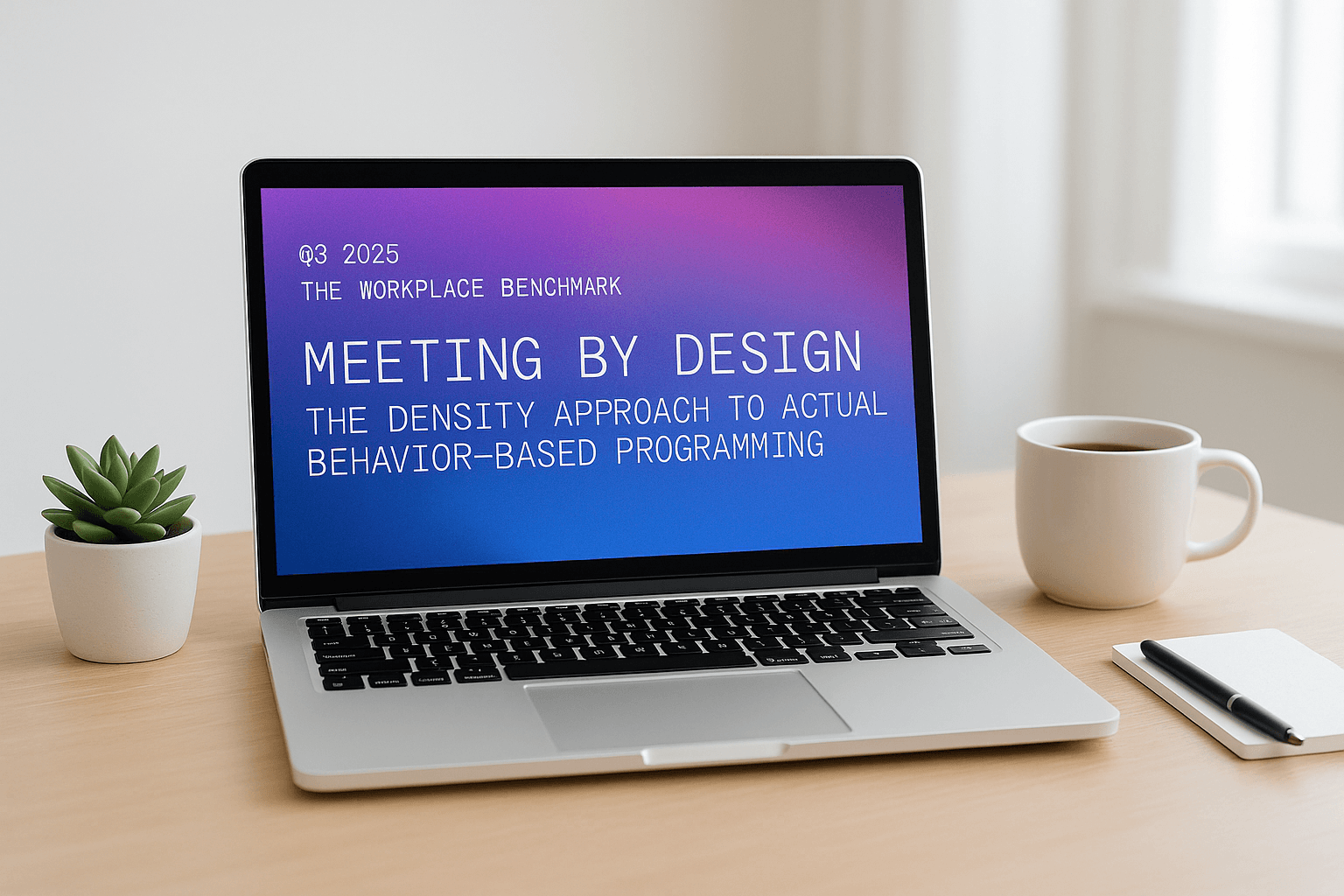We have a space problem: Benchmarks reveal $150 billion in office waste
37% of workplaces globally were empty during any given workday in 2018.

According to Gensler, 83% of corporate real estate executives rank space utilization as the key metric for making workplace decisions. As more companies collect space utilization data, benchmarking across regions, industries and space types is now possible. We compiled utilization benchmarks from JLL, CBRE and Density’s own clients to identify patterns across space utilization. Here’s what we found:
1. Offices around the world are (still) empty
Across all regions, only 13% of organizations utilize their space more than 80% of the time. 37% of workplaces globally were empty during any given workday in 2018. A 2015 report from CBRE shared similar utilization rates globally: 40% of all office space was empty. That's equal to $150 billion dollars in unused space.
2. Utilization rates vary by industry
Public sector and non-profit workplaces have the highest utilization rates, with 80% and 95% respectively. They tend to have older buildings with higher density. Offices for telecom/utilities and financial services are used the least, and are empty for 50% of an average workday.
3. Meeting rooms signal a massive opportunity
The global average meeting room utilization is just 30%. When meetings rooms are in use, only 40% of seats are occupied. Most organizations build meeting rooms for six people, but most meetings are held by two or three people.
4. Private space means unused space
A popular perk for raising through the ranks of an organization used to be a private office. But organizations are beginning to rethink private offices, which are unoccupied 77% of the workday.
It’s clear that workplaces today are massively underutilized. With accurate data, it's possible to do the impossible: reduce your portfolio footprint while at the same time enhancing the employee experience. Workplaces are increasingly allotting 150 sq ft per person, 33% less than 225 sq ft in 2010. More companies are introducing mobility programs that eliminate assigned desks and designated personal space. Policies like “hotelling” and “hot desking” policies provide employees access to space on an as-needed basis. The cost savings are clear: if companies were to improve their utilization of space, they would save hundreds of thousands of dollars per floor.
Taken to an extreme, squeezing more employees into fewer square feet is counterproductive. No one wants to work in an overcrowded office, and densification for the sake of space savings alone leads to unhappy workers.
Improving space utilization requires a deep understanding of how individuals at a company use their current office, and a workplace strategy tailored to their own needs. So, while global utilization benchmarks prove there is industry-wide opportunities to eliminate wasted space, company-specific space utilization data is required to make an office suited for the people who use it.
Key Takeaways

DisruptCRE founder shares how corporate real estate is changing
Companies are moving employees from underutilized offices into "space as a service” options with utilization data.
Watch now
Half of offices are empty but you still can’t find a meeting room
Employees waste up to 30 minutes a day looking for a meeting room to meet in workplaces.
Read moreMost recent

Meeting space playbook: programming ratios that really work
Forget static formulas. This new research-driven playbook shows how to use real behavior to right-size your office for today’s meetings.

Space waste: The industry’s naughty and nice list
Our sensors spilled the beans: What industry is winning, who's wasting and who's hogging your office real estate.
.png)
Improve your occupancy sensor RFP with our best practice guide
Discover essential questions to simplify your occupancy sensor RFP process and confidently choose the right vendor.
.png)
Room raiders: The office upsizing epidemic
Tiny teams hogging big rooms leave large groups stranded—welcome to the new war for meeting space!
Explore other Density Products
Atlas for Workplace
Insights for the workplace that help you cut costs and deliver better spaces.
Learn more